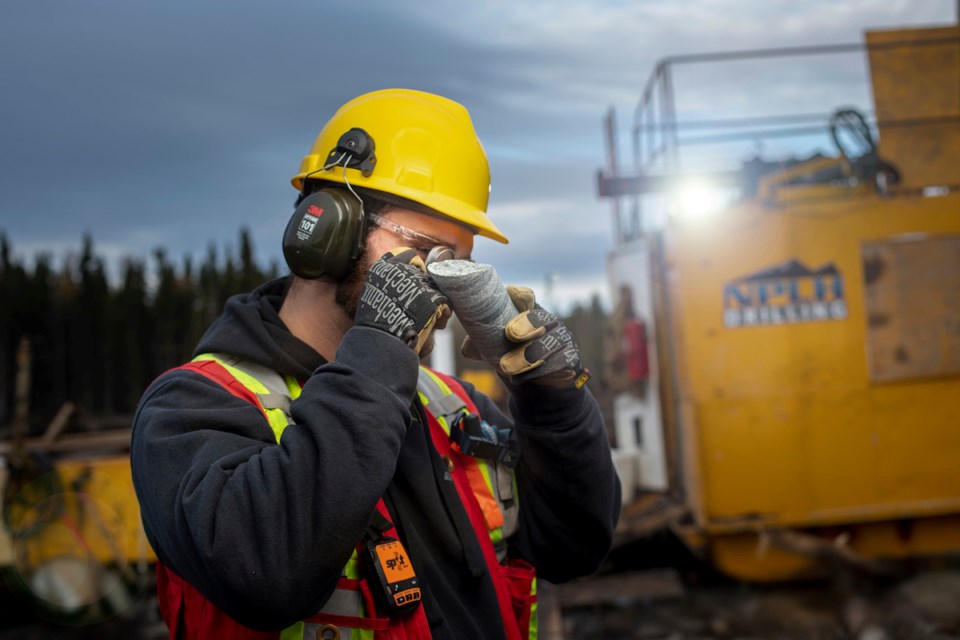If Canada Nickel Company’s Crawford Mine Project becomes a reality by 2027, Timmins will have the second largest nickel mine in the world.
CEO Mark Selby took the wraps off the company’s long-awaited feasibility study, describing the details behind proposed a 41-year open-pit mine life for its Crawford Project, located 40 kilometres north of a northeastern Ontario city that’s more widely known as one of the best gold mining districts on the globe.
“Crawford is the world’s largest sulphide discovery in many, many decades,” said Selby, in an Oct. 12 conference call with mining analysts.
“We are unlocking, what we think is, a world-class, potentially the largest nickel sulphide district, globally.
With an average grade of 0.24 per cent nickel, Crawford will be a low-grade, big tonnage open-pit operation that will ramp up production in three phases and physically expand twice over four decades.
The company is a third of the way through the regulatory permitting process and a financing plan to be put in place for the US$1.7-billion project.
Selby said they are less than 21 months away from making a final construction decision.
All the permits should be in place by mid 2025 with a goal of first production by the end of 2027.
Crawford and its larger land package in the Timmins district appears to be a base metals and critical minerals grocery store for the North American battery manufacturing and automotive companies.
Besides containing a nickel reserve of 3.8 million tonnes, the proposed US$1.7-billion mine and mill project also contains a useful mix of other market desirable minerals.
Over its operational life, Crawford will produce 1.6 million tonnes of nickel, 24,000 tonnes of cobalt, 490 million ounces of platinum and palladium, 58 million tonnes of iron, and 2.8 million tonnes of chromium.
Crawford will also bring more processing capacity to the Timmins area. The company intends to make an iron-nickel-chrome product for the North American stainless steel and ferro-alloy sector.
“We will be the only chromium producer in North America,” said Selby, in perhaps a subtle dig at the 15-year inertia associated with Ontario’s Ring of Fire.
The Toronto company has come a long way in a relatively short period of time it they began exploration drilling in 2019 and rapidly began sizing up Crawford to become one of Canada’s largest mining operations.
Selby said they are “well down the path” toward securing customers by way of offtake agreements.
They expect to have one of two nickel customers locked up by year’s end. Eventually, they hope to sign on a specialty steel producer.
Want to read more stories about business in the North? Subscribe to our newsletter.
These customers will need to provide upfront payments to bridge their financing requirement between now and when Canada Nickel makes a final mine construction decision in mid-2025. From offtake agreements, Selby said they expect to generate $200 million to $300 million, "if not more.”
“The markets are tough these days, but because we’ve got something that people very, very much want, we think we’ll continue to be well financed and be able to get the capital we need to continue to advance this project aggressively without having to tap the equity market.”
With an emphasis on creating a net-zero carbon-emitting mine and processing operation, Canada Nickel appears to be leaning heavily on government funding sources for the project.
Selby said there’s a "wonderful window of opportunity” of available government money for critical mineral projects that could net a big chunk of their project capital for Crawford.
Government tax credits alone can knock $200 million off the projects, but there’s also a plethora of government funding programs to tap into, he said, mentioning the federal Strategic Innovation Fund and the Critical Minerals Infrastructure Fund.
Selby said he’d be disappointed if they secured less than US$400 million of capital from the Canadian government.
The Ontario government has provided funding for the electric vehicle and battery supply chain, and there’s a European fund available for companies there to enter into offshore offtake agreements with mining operations.
The U.S. Department of Defence has shown a penchant for writing cheques to support critical minerals projects in North America.
Looking ahead on the mining front, Selby said the Crawford Project is just the starting point for what he has been promoting as a larger “Timmins nickel district.”
“We think Crawford is just the first of what will be four or five projects in this region going forward given the mineral potential.”
The company sees a target-rich environment across 42 square kilometres that may harbour even larger deposits than Crawford.
“Everyone on our team believes that Crawford will be our first project, but everyone believes that Crawford will not be our best project.”
“We each have our favourite project and within the portfolio.”
A leading target is the high-grade Texmont Project, south of Timmins, which the company hopes to get into production by 2025 as a small-scale, open-pit operation. A mineral estimate comes out by the end of this year with a preliminary economic assessment to follow.
A unique revenue stream will come from Crawford’s natural carbon capture storage ability. The ultramafic rock, which contains the minerals, has an ability to absorb and sequester carbon dioxide.
Though their carbon strategy remains a work in progress, Selby said two very large North American carbon solution businesses knocking on their door are “very keen” to use their carbon storage capacity.
One study revealed Crawford’s rock has the ability to store 1.5 million tonnes of carbon dioxide annually over a peak period of 27 years, making it one of the largest carbon storage facilities in Canada, something that might be appealing to big emitters in Sault Ste. Marie, Sudbury, Sarnia and Toronto, Selby said.
“The world needs large-scale, low-carbon sources of nickel to fund the energy transition, and these types of deposits and what we have at Timmins is exactly what the world needs,” said Selby.



